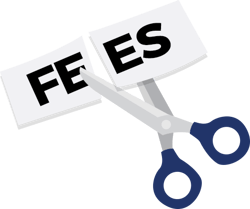Originally published on August 26, 2021, updated February 22, 2023
Menu
Join Our Email List
- Receive our monthly newsletter.
- Stay up to date on Amazon policies.
- Get tips to grow your business.
In theory, listing products on the Amazon marketplace gives sellers access to a massive audience of potential buyers. In practice, simply listing your products won’t necessarily get you far in an environment as competitive as the Amazon marketplace. For many Amazon merchants, that means it pays to do additional advertising and marketing off Amazon to drive interest in the products you sell on the platform.
And now, the marketplace is giving sellers an extra incentive to do just that through the Amazon Brand Referral Bonus Program.
The Amazon Brand Referral Bonus Program is Amazon’s new initiative for rewarding sellers when their off-Amazon advertising drives buyers to the platform. The program encourages brands to invest money and effort into ads that direct people to their product pages on the Amazon marketplace. Each time those efforts pay off in a sale, the seller/brand gets money back, ensuring it makes more of a profit at the end of the day.
The Brand Referral Bonus Program is probably sounding pretty nice, right? Yet to know if it’s truly worth it, you need to know what else is involved. Here’s some of the main information about the program to be aware of.
For the return to be worth what you invest in advertising offsite, you need to know how much you’ll be getting back. While the specific amounts will vary, Amazon has shared that the average amount of a bonus is 10% of the cost of the sale. That can potentially add a lot to your overall profits.
Sometimes when a prospective customer clicks on an ad, they’re not immediately ready to make that purchase. Once a shopper has found a product they like though, many will make their way back to it in time. Amazon’s bonus program ensures you get credited with any sales of your products that happen within 14 days of a consumer clicking on your ad.
Knowing the average bonus rate doesn’t tell you the whole story because the amount you get paid for each sale depends on the type of product. Amazon provides a chart that outlines the percentages by product type. Some examples of common product types are:
The majority of products fall into the 10% categories but review the whole list to make sure you know what to expect for the specific products you sell. To estimate what your bonus will be for each sale, multiply the number of qualifying sales by the minimum bonus rate in the relevant category. Amazon will also provide a weekly bonus report to help you keep track.
 You don’t make the money immediately with the program. To account for order cancellations and customer returns, Amazon waits two months before providing sellers with the bonuses they’ve earned. Instead of cutting a check, the bonus is applied as a credit to your Amazon account, essentially reducing the amount you pay in fees to Amazon.
You don’t make the money immediately with the program. To account for order cancellations and customer returns, Amazon waits two months before providing sellers with the bonuses they’ve earned. Instead of cutting a check, the bonus is applied as a credit to your Amazon account, essentially reducing the amount you pay in fees to Amazon.
The Amazon Brand Referral Bonus Program is specifically for brand owners, so resellers can’t participate. If you are a brand owner, all you have to do is make sure you’re enrolled in the Brand Registry to qualify.
Note: Resellers aren’t entirely out of luck. There’s also a separate program incentivizing offsite marketing and advertising for resellers: Amazon Associates.
With any marketing effort you invest in, you want a way to measure your success. Amazon now offers Amazon Attribution to help you track how well your offsite advertising efforts pay off. With the analytics provided, you can figure out which strategies are contributing to the most sales and improve your results over time. That can lead to more sales, bigger bonus payouts, and higher profits overall.
For any brand working now to drive traffic to your listings on Amazon, the brand referral program simply gives you an extra way to make more money from the work you’re already doing. Enrolling is an obvious choice.
Related Reading: Six Steps to Build a Stronger Amazon Brand Identity
For brands that sell the same products on Amazon that they also sell through their own website, paying to drive traffic to a third-party site rather than your own may not make much sense. If you ultimately profit more from the sales customers make directly through your site, you may want to stick with advertising and marketing investments that get more visitors to your own site rather than Amazon. In that case, the program may not fit with your primary brand strategy.
You can register for the Brand Referral Program in Seller Central. If you aren’t already enrolled in Amazon Attribution, do that now. It’s a necessary step in making sure the traffic your efforts produce is counted. Then, start advertising and analyze your success as you go. It’s as easy as that.
Originally published on August 26, 2021, updated February 22, 2023
This post is accurate as of the date of publication. Some features and information may have changed due to product updates or Amazon policy changes.
These Stories on Advertising
14321 Winter Breeze Drive
Suite 121 Midlothian, VA 23113
Call us: 800-757-6840





Copyright© 2007-2025 eComEngine, LLC. All Rights Reserved. eComEngine®, FeedbackFive®, RestockPro®, and SellerPulse® are trademarks or registered trademarks of eComEngine, LLC. Amazon's trademark is used under license from Amazon.com, Inc. or its affiliates.
No Comments Yet
Let us know what you think